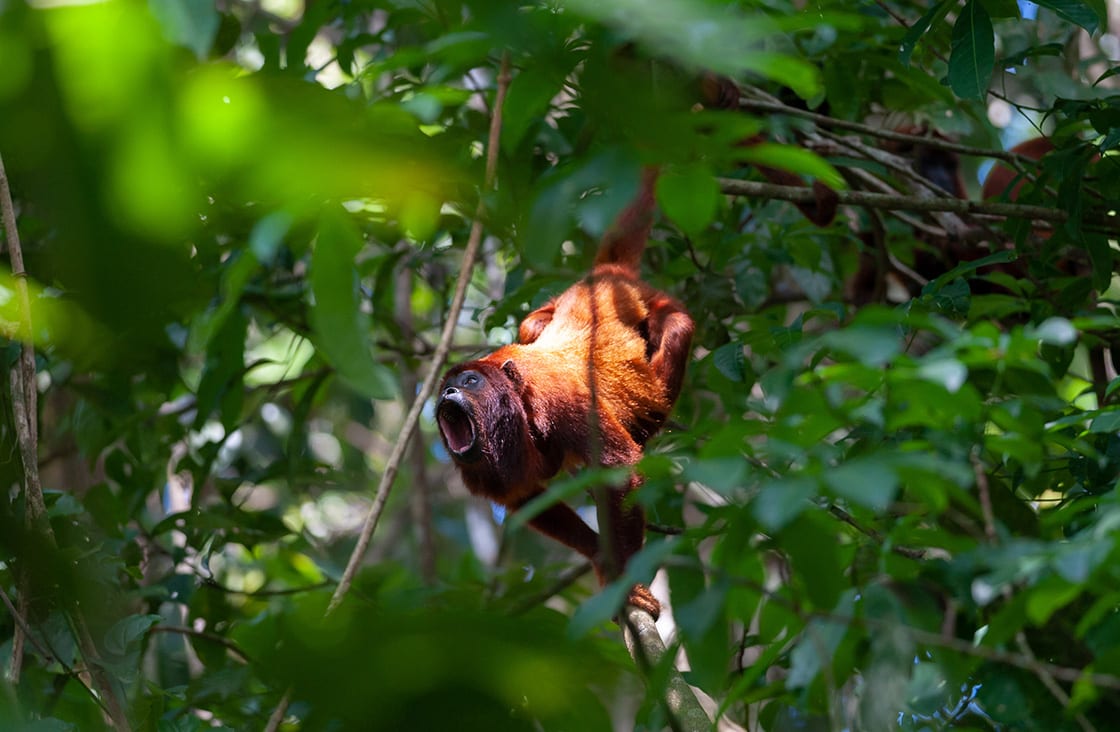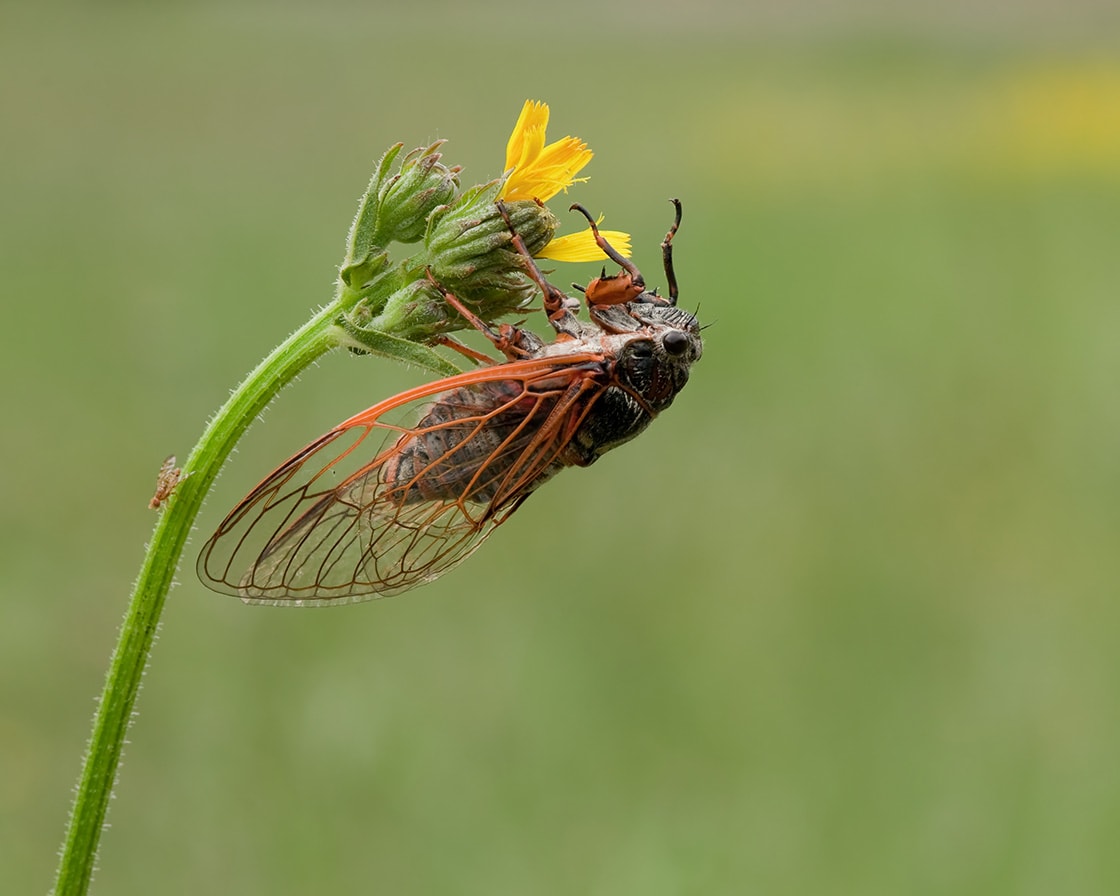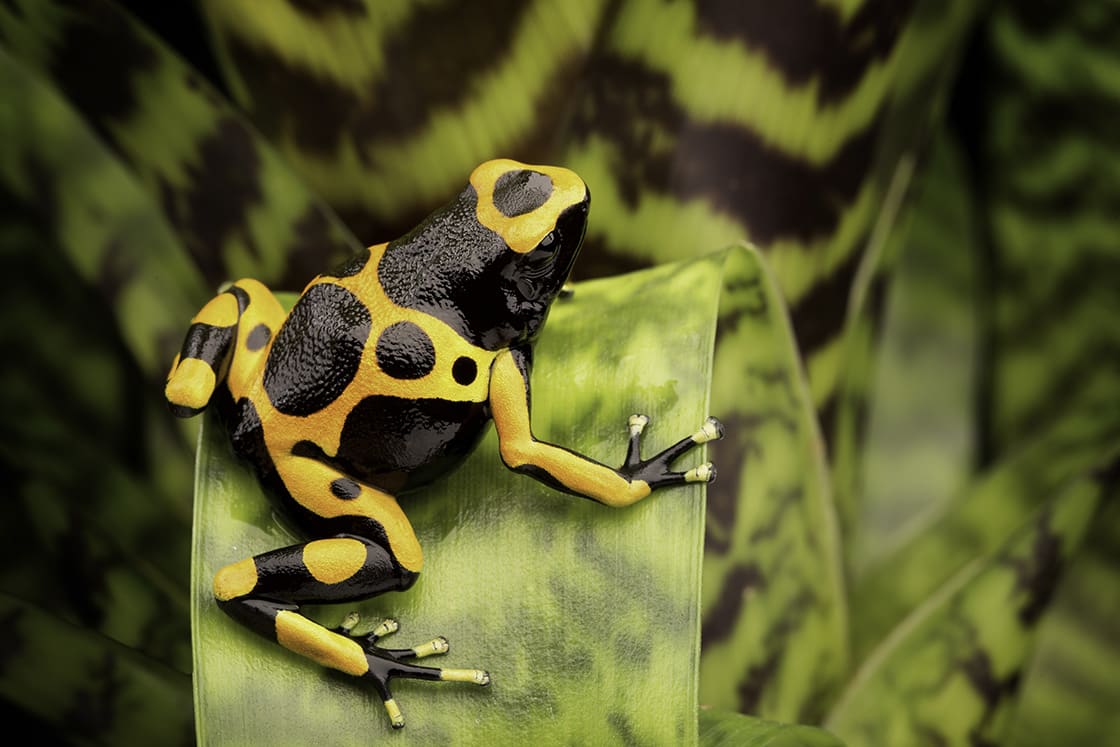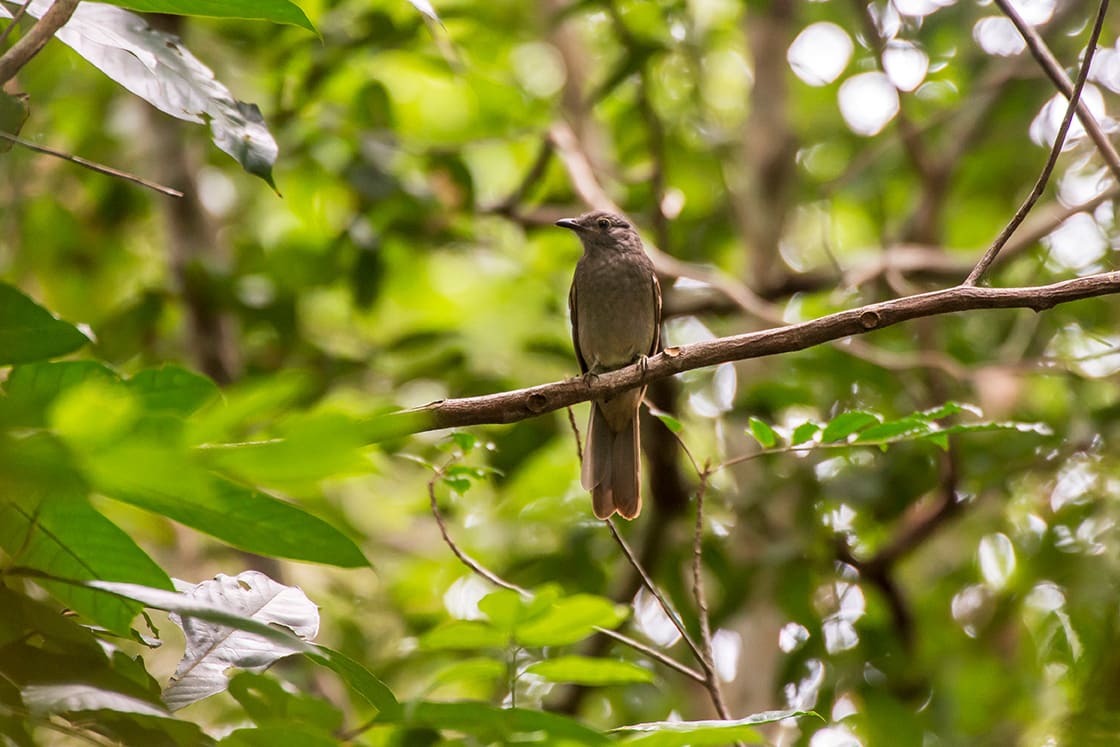
An Amazon rainforest vacation is truly an experience for all of the senses: sight, smell, sound, taste and touch. Immediately upon arrival, you’ll notice the sounds of the Amazon and depending on the time of day, season and location, the sounds you hear may vary greatly. A constant buzz from the millions of insects and other creatures is common during both the day and night. Occasionally, a loud piercing noise might startle you; some Amazonian critters emit sounds that reach up to 130 Decibels!
To get a better understanding of how loud these animals are, remember that human shouting is 70 dB, thunder is 100 dB and a military jet is 120 dB. Sounds over 120 decibels are painful to human ears. The being said, read our list below to learn about the six loudest animals in the Amazon jungle.

Alpha Male Of A Red Howler Monkey
Howler Monkeys, the largest of Amazon Rainforest monkeys, are also the loudest of all Amazon animals – in fact they take the title for the loudest land mammal in the world. Even though they are quite large in size, you will most likely hear them, before you see them! Due to their enlarged hyoid bone, their distinctive territorial call can be heard up to 3 miles away. The U-shaped bone in the Howler’s throat isn’t hooked to any of the other bones, it really just ‘hangs there’. This creates a throat sac in which the monkey’s calls resonate before booming out. The monkeys have a variety of different calls for communicating location, protecting territory, and guarding mates.

Bare Throated Bellbird It is found in moist subtropical and tropical forests in Argentina, Brazil, and Paraguay
Bellbirds (Procnias nudicollis) live high up in the forest canopy and are known for being one of the loudest birds of the Amazon, with calls that can be heard up to 1km away. Their calls are short, simple, but loud enough to damage a human ear. The leaves of the tropical rainforest help reflect their series of metallic “tonk-tonk-tonk” mating calls. Interestingly it has been found that, unlike other birds, the bellbird has to learn its song, rather than having the song determined by instinct, because recordings have proven its song changes over the course of around 7 years.

Tibicen Plebejus singing Cicade Spotted On A Bending Yellow Flower
Cicadas are the loudest insects in the Amazon jungle. Cicada in Latin translates to tree cricket. They sing to attract mates and their noise can reach in excess of 100dB and travel for over a mile. They produce the sound from a musical drum called tymbals, located in their abdomen. The hollow abdomen helps in amplifying the sound produced by contracting the internal muscles. They often group together when singing their mating song so they can confuse birds and other predators.

The yellow-banded poison dart frog, also known as the yellow-headed poison dart frog
The Yellow Banded Poison Dart Frog (Dendrobates Leucomelas) is one of the world’s loudest daytime singing frogs. During mating season, males use vocalizations described as bird-like chirps, buzzes, trills, and hums to get the attention of females. Their loud calls go on for an hour or two after sunrise and before sunset. Their sounds, however, do not match up to the common Coqui Frog, found in Puerto Rico. Coqui frogs are the loudest amphibians, named after the two-part sound they make, “co” to defend their territory against other males while the “qui” attracts the females. Their sounds reach approximately 120dB.

Screaming Piha
The screaming piha (Lipaugus vociferans) is found in humid forests in the Amazon and tropical parts of the Mata Atlântica in South America. As you can imagine, judging by the name, its voice is extraordinary and exceptionally loud. The Pinha is famous for its whistled three-part song described as cri-cri-o, pi-pi-yo, or qui-qui-yo, which is one of the signature sounds of the Amazon. The sound is frequently used in movies, and also can be heard in the background of the popular game Angry Birds Rio. Males often gather in small groups in the forest where they sing their piercing songs and advertise for females which is audible through up to 400m of the rainforest.

The greater bulldog bat or fisherman bat
Unusual among bats, Bulldog Bats have cheek-pouches for storing food. They also have full lips divided by a fold of skin giving a ‘harelip’ look which together with the cheek pouches gives them their bulldog-like appearance. They can make a very loud sound while trying to find their way home at night. Their sound can be 100 times louder than a rock concert. Bats use sound to navigate in what is known as echolocation. These bats live around water and their food of choice is fish. They use their echolocation to pinpoint the ripples fish make on the surfaces of water. In a single night, the bat may catch 20-30 small fish! Their sound is not audible to humans as it is in the ultrasonic range reaching from 20 kHz to 200 kHz.
All of our Amazon River cruises offer daily jungle excursions accompanied by naturalist guides who regularly listen closely to the jungle to help you distinguish its sounds. Perhaps you’ll hear the growl of a Howler Monkey, or a piercing song from the Screaming Piha bird, whatever the case may be, be prepared to perk up your senses, you won’t want to miss a sound!
While Rainforest Cruises aim to provide accurate and up-to-date information, we make no representations as to the accuracy or completeness of any information herein or found by following any link on this site. Rainforest Cruises cannot and will not accept responsibility for any omissions or inaccuracies, or for any consequences arising therefrom, including any losses, injuries, or damages resulting from the display or use of this information.




